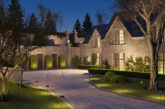
In this article, the experts at Ansell Lighting look at how interoperability lighting works and advise on how to create an interoperable environment.
As the demand for smart lighting control solutions in the built environment continues to intensify, the need for educational buildings to run as safely and cost-effectively as possible is greater than ever.
Building operators can now safely monitor and control energy, lighting, use of space, emergency system maintenance and much more. However, for smart lighting to truly fulfil its potential, the most critical challenge to overcome is achieving interoperability.
How can you create an interoperable environment that delivers truly smart lighting to projects?
Smart lighting systems have delivered huge benefits to organisations since their creation and are, importantly, having a huge impact on the reduction of energy bills and carbon emissions across all sectors.
With budgets tightening and operating costs continuing to rise, making the move to smart lighting is something many businesses and organisations must consider in order to conserve funds and improve operational efficiencies.
What benefits does smart lighting offer?
- Suitable for both internal and external lighting circuits, it can be used to control illumination in all spaces.
- Responsive and adjustable, the automated technology ensures that lighting is used only where and when it is needed, reducing wasted energy use and its associated financial and environmental costs.
- Lighting hues can be pre-set, providing a huge impact on safety and wellbeing.
- Smart technology is measurable. Recent advances in equipment mean that many smart lighting solutions now come with dashboard controls which can accurately measure lighting energy usage in real time, giving a clear view of lighting-based energy consumption data across one building or an entire portfolio. This allows usage to be accurately evaluated and opportunities to reduce unnecessary use to be identified.
To unlock these benefits you first need to achieve interoperability.
What is interoperability?
It means creating an environment where systems and devices, produced by different manufacturers, use common communication protocols to work together seamlessly to deliver a truly smart lighting scheme.
What solutions are out there?
Zigbee: Widely used in smart home and building automation systems, Zigbee is a low-power wireless protocol that is designed to be interoperable across different devices and systems. It operates on the 2.4 GHz frequency band and can support up to 65,000 devices on a single network.
Bluetooth mesh: Designed specifically for the Internet of Things (IoT), Bluetooth mesh operates on the same 2.4 GHz frequency band as Zigbee and can support up to 32,000 devices on a single network. Bluetooth mesh is particularly well-suited for lighting applications, as it offers low latency and high reliability.
Sensors: In addition to wireless protocols, smart lighting systems can also use sensors and triggers to achieve interoperability. Sensors can detect changes in the environment, such as occupancy or ambient light levels, and trigger actions such as turning lights on or off. Triggers can be used to initiate actions based on specific events, such as a door opening, or a motion sensor being triggered.
The Cloud: Using cloud-based services is another approach that can be considered to help manage and control different devices and systems. Cloud-based services can provide a central point of control for multiple devices and systems, making it easier to achieve interoperability.
Is there any other advice for installers?
Whatever technology is selected, achieving interoperability in smart lighting requires a collaborative approach between all stakeholders involved in the design and use of the building. Specifying a truly interoperable system from the start will ensure that its benefits are harnessed for the long-term future.
Get more details on Ansell’s CPD Courses and future dates here









